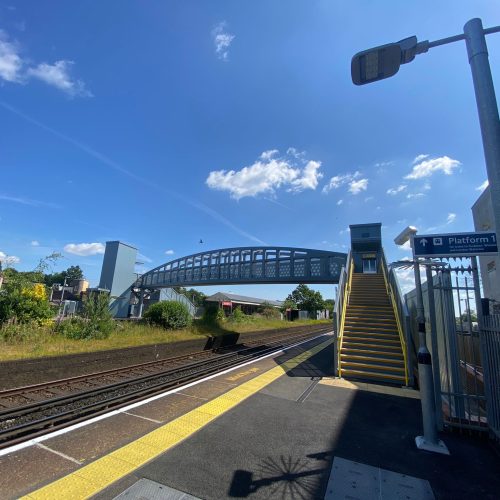We can never have a perfect view of the future. But we can look at trends and make reasonable predictions about who will need to access the future rail network – and how they will access it.
This matters because we want to ensure that stations undergoing AfA upgrades are ready to meet future, as well as present, needs. The ‘All’ we’re thinking about goes beyond today’s needs and opportunities. The last thing anyone wants is to have to upgrade the upgrades at some future date.
We know, for example, that the average age of the population is increasing. There will be a higher proportion of older people and more will have mobility issues or impaired sight and hearing.
We also know that assistive technologies such as AI and augmented reality will play a greater role in how people interact with their surroundings. The DfT Inclusive Transport Strategy offers clear pointers in this direction.
How are we preparing for this future, and how are these considerations influencing the way we deliver AfA schemes today?
A Digital Future
The most fundamental need is to create clear and accurate documentation in digital formats. While we don’t know exactly which tools will be used for digital mapping and wayfinding, we do know that clear digital documentation will make implementation more straightforward.
Consistent layouts, clear sightlines and standardised signage are helpful for all passengers, and vital if we want to encourage greater rail use in the future. Consistency will also help AI-based indoor navigation apps interpret their surroundings and ensure visually impaired people can navigate a safe route through the station, to and from the platform. This brings an added dimension to the planning and design processes.
Making Space For The Future
Designs must also allow for installation and use of AI tools that rely on Bluetooth beacons, NFC tags, or LiDAR to help users with visual impairments orient themselves. Far better to allow for these now than face a disruptive retrofit later.
For us, AfA schemes are more involved than physical enhancements to the station such as obstruction-free routes, ramps and lifts to platforms. The future we’re planning for also includes assistive technologies such as:
- Real-time spoken wayfinding apps like GoodMaps and Aira,
- Augmented reality tools for deaf or neurodivergent users,
- Personalised route planning tools based on user profiles including mobility issues and anxiety triggers.
Unlike the original station builders, we have over 100 years of rail usage patterns to inform us. We also have a clearer understanding of how rail use and associated technologies are likely to evolve. We’re determined to make the best possible use of those advantages.
Access our AfA resource area below to find out more.
Access Our Resource Centre
By signing up, you’ll gain access to our resource hub, designed to support rail operators, designers and project teams in delivering successful Access for All (AfA) projects.
Access valuable resources, including:
- Proven Practices: Practical guides on AfA project management to improve efficiency, reduce costs and achieve sustainable outcomes.
- Regulatory Guidance: Clear insights into compliance requirements to ensure your projects meet the highest standards of accessibility and safety.
- InnovateUK Report Summary: Detailed findings on the future of accessible and inclusive rail travel in the UK.
- House of Commons Report Overview: An overview of the legislative framework for AfA, including its alignment with the Equality Act 2010.
Sign up today to access these essential resources—completely free.

